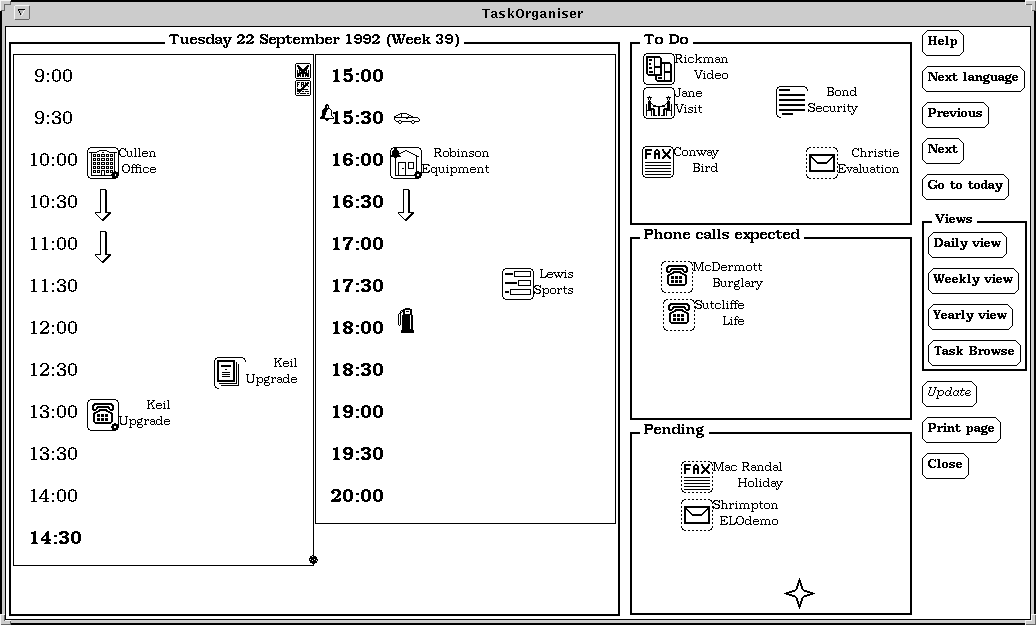

Many professionals frequently work at locations away from their main office, or while on the move. Keeping track of appointments, information, actions and so on is a significant problem, particularly given the high level of interruptions that such workers suffer. In addition, communications, both within the parent organisation and to clients in other organisations, are a major issue.
The aim of the ELO project was to exploit a number of trends in portable workstation effectiveness (particularly graphical user interfaces and multiple process operating systems), coupled to the emerging lightweight wireless communications technologies by providing an integrated environment to support such a demanding work environment.
ELO: Elusive Office was concerned with the provision of the next generation of high power, portable workstations for such a mobile user. As well as providing good communications with central sites via conventional telecomms and Cellnet the system was designed to provide an integration between the applications and an associated help and training system. Informatics' major role was on the (software) Integration Framework. Tony Conway and Ken Robinson provided most of the input to the Technical papers and some initial specification and selection work. The effort on the project plan was minimal during the first period but increased in 1990.
Informatics main role was providing a high-quality user interface and a framework for integration.
One of the major achievements was the development of an appropriate foundation for the user interface. Overall user goals are achieved by executing chains of relatively simple User Tasks; information is automatically passed between these Tasks so no re-keying of information is necessary. In addition, new goals can be initiated from any Task, enabling the worker to address new, lateral issues, without losing the original thread of approach. This atomic Task approach serves two purposes: it ensures that resumption of an activity is easy following interruptions and facilitates information reuse.
There were two types of application available on the system: generic tasks, common to a wide range of activities (such as meeting preparation and making telephone calls), and specific tasks, which were related to a specific goal (the one chosen was in the insurance domain). A Task Organiser was developed, which provided diary-based task planning, enabling the control of the multifarious Tasks that were live in the achievement of many concurrent user goals. Help and learning support was also included in the development.

A further level of integration was provided by the secure communications facilities developed, which offered email, fax, telephone, and answerphone features with a common user interface.